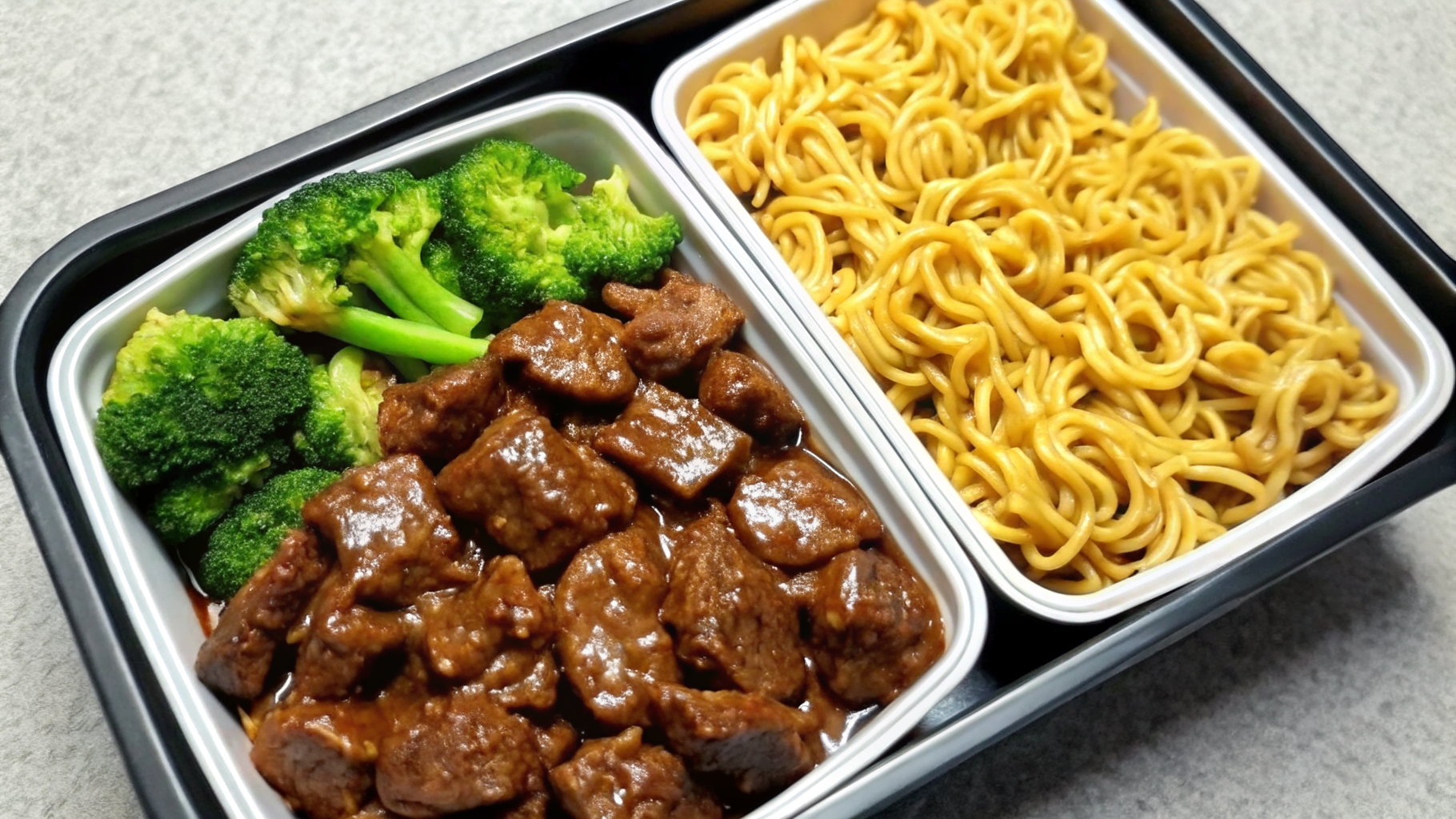Want to enjoy Chinese food at home? Beef and broccoli lo mein is a tasty choice. It combines tender beef, crunchy broccoli, and noodles in a delicious sauce. It’s sure to wow your family and friends.
Making beef and broccoli lo mein at home is more than saving money. It’s about mastering a skill. You get to choose your ingredients and adjust the flavors. This way, you can make your dining experience unique.
In this guide, you’ll learn how to pick the best ingredients and stir-fry like a pro. These tips will take your lo mein from good to great. Whether you’re new to cooking or already skilled, these steps will help you make a fantastic meal.
Key Takeaways
- Master authentic beef and broccoli lo mein at home
- Learn professional Chinese cuisine cooking techniques
- Control ingredients and customize your dish
- Save money by cooking restaurant-quality meals
- Impress family and friends with your culinary skills
Understanding Authentic Chinese Lo Mein Basics
Lo mein is a key part of authentic Asian flavors. It offers a journey through traditional noodle dishes loved by many for generations. This dish combines textures, tastes, and cultural importance perfectly.

Tracing the Roots of Lo Mein
The history of lo mein goes back centuries in Chinese cuisine. It started as a simple yet satisfying noodle dish. Developed during the Han Dynasty, it quickly became a staple in Chinese cooking.
Chefs made lo mein to turn basic ingredients into a tasty meal. It was meant to feed families and workers.
Distinguishing Lo Mein from Other Noodle Varieties
Lo mein is unique because of its preparation method. The name “lo mein” means “tossed noodles.” This makes it different from stir-fried or soup-based noodles.
- Chow mein: Crispy and stir-fried
- Ramen: Japanese-style soupy noodles
- Lo mein: Soft noodles gently tossed with ingredients
Essential Components of Traditional Lo Mein
Authentic lo mein needs a mix of ingredients for its flavors and textures. The main parts include:
| Ingredient Category | Traditional Components |
|---|---|
| Noodles | Egg noodles, wheat-based |
| Proteins | Beef, chicken, shrimp, or tofu |
| Vegetables | Bok choy, carrots, onions |
| Sauce | Soy-based, with sesame oil |
Knowing these basics helps you appreciate lo mein’s rich tradition. Each ingredient shares a story of cultural heritage and cooking skill. This makes lo mein dishes truly special.
Essential Ingredients for Beef and Broccoli Lo Mein

Starting with the right ingredients is key to making tasty stir-fry recipes. For a great beef and broccoli lo mein, you need fresh produce and quality proteins. These elements will make your vegetable-based meals come alive.
Your main ingredients should include:
- Noodles: Fresh egg noodles or wheat-based lo mein noodles work best
- Beef: Flank steak or sirloin, sliced thin against the grain
- Broccoli: Fresh, crisp florets for maximum texture and nutrition
Choose beef with little fat for the best taste. Grass-fed beef adds amazing flavor to your stir-fry. You can also add more veggies like:
- Julienned carrots
- Sliced bell peppers
- Thinly cut onions
- Bean sprouts
The sauce is key for authentic flavor. You’ll need:
- Soy sauce
- Oyster sauce
- Sesame oil
- Minced garlic
- Fresh ginger
Pro tip: Use fresh ingredients and prep them before cooking. This way, your beef and broccoli lo mein will have vibrant flavors and perfect texture.
Kitchen Tools and Equipment You’ll Need
To cook like a pro at home, you need the right kitchen tools. Making beef and broccoli lo mein is easier with the right equipment. It helps you get professional results.
Wok vs. Regular Pan: Choosing Your Cooking Surface
The right cooking surface is key for authentic lo mein. A traditional wok has many benefits over a regular pan:
- Better heat distribution
- Higher walls for easier tossing
- Quick, even cooking
- Authentic restaurant-style cooking experience
Professional chefs recommend carbon steel or cast-iron woks for the best results.
Essential Utensils for Perfect Stir-Frying
Here are the must-have tools for stir-frying:
- Long-handled metal spatula
- Sturdy tongs
- Mesh strainer
- Wooden cooking chopsticks
Heat Source Considerations
Stovetops can affect your cooking. Gas ranges are best for high heat. Electric and induction cooktops work well with the right technique and a good wok.
Choose your equipment wisely. It will turn your kitchen into a home restaurant. Enjoy professional cooking at your own table.
Preparing Your Ingredients Like a Pro
Starting with smart ingredient preparation is key to making tasty protein-rich dishes like beef and broccoli lo mein. Your comfort food journey begins with mastering a few key techniques. These techniques turn ordinary ingredients into an extraordinary meal.
- Select a lean cut like sirloin or flank steak
- Slice meat against the grain for maximum tenderness
- Cut beef into thin, uniform strips (about 1/8 inch thick)
- Aim for strips roughly 2-3 inches long
Broccoli preparation needs equal attention. Trim the florets into bite-sized pieces that will cook evenly and retain their vibrant green color. Professional chefs recommend cutting florets into similar sizes to ensure consistent cooking.
Your mise en place strategy is critical. Before you start cooking, have all ingredients chopped, measured, and ready to go. This approach prevents last-minute scrambling and ensures a smooth cooking process.
Marinating the beef can elevate your protein-rich dish. Create a simple marinade using soy sauce, rice wine, and a touch of cornstarch. Let the meat sit for 15-20 minutes to absorb flavors and become more tender.
Pro tip: A quick blanch of broccoli in salted water will help maintain its crisp texture and bright color in your final lo mein dish.
Mastering the Perfect Lo Mein Sauce
Making a great sauce is key to amazing beef and broccoli lo mein. The right sauce turns simple ingredients into a memorable dish. It takes you straight to a traditional kitchen.
Creating the perfect lo mein sauce is all about balance. Your sauce is the heart of the dish, not just a topping.
Sauce Base Components
Start with these essential ingredients for your sauce:
- Light and dark soy sauce for depth
- Oyster sauce for umami richness
- Sesame oil for authentic aroma
- Rice vinegar for subtle tang
Balancing Sweet and Savory Flavors
Chinese cuisine is all about mixing flavors. Add brown sugar or honey to balance the saltiness. This makes your sauce coat the noodles with depth.
Make-Ahead Sauce Tips
Make your sauce ahead of time to save effort. Mix and store it in a sealed container in the fridge for a week. Remember to whisk it before using to mix everything well.
“The secret to great lo mein is in the sauce – it should sing with flavor!” – Chef Ming Tsai
Step-by-Step Beef and Broccoli Lo Mein Technique
Mastering stir-fry recipes is key to cooking like a pro at home. The secret to great beef and broccoli lo mein is in the prep and technique. You can make that restaurant-quality flavor in your kitchen.
Start by getting your ingredients ready before cooking. This step is vital for a successful stir-fry. Make sure everything is chopped and ready to go.
- Slice beef against the grain into thin strips
- Cut broccoli into bite-sized florets
- Measure out your sauce ingredients
- Have noodles cooked and drained
When it’s time to cook, heat your wok or skillet until it’s very hot. This high heat is crucial for that restaurant feel. Cook the beef in small batches to keep it tender and nicely browned.
“The secret to perfect lo mein is quick, high-heat cooking and constant movement.”
Then, stir-fry the broccoli until it’s green and still crisp. It’s important to keep it vibrant and crunchy. Add the noodles and sauce, tossing everything together fast to prevent sticking.
Finish with a quick, vigorous toss to mix everything perfectly. The whole process should take 5-7 minutes, capturing the true stir-fry essence.
Troubleshooting Common Lo Mein Challenges
Mastering noodle dishes like lo mein takes practice and some expert tips. Even skilled cooks face issues when making beef and broccoli lo mein. This guide will help you solve common problems and achieve restaurant-quality dishes.
Preventing Soggy Noodles
Soggy noodles can spoil your favorite dishes. To keep noodles crisp, follow these tips:
- Cook noodles just until al dente
- Rinse with cold water right after cooking
- Drain well before stir-frying
- Use high heat to prevent water retention
Achieving the Right Sauce Consistency
The sauce is key to a great lo mein. Here are quick fixes for sauce issues:
| Sauce Issue | Solution |
|---|---|
| Too Thin | Add cornstarch slurry |
| Too Thick | Thin with chicken broth |
| Bland Flavor | Adjust seasonings |
Proper Beef Cooking Temperature
Perfect beef temperature is crucial for great lo mein. Use a meat thermometer to check:
- Rare: 125°F
- Medium-rare: 135°F
- Medium: 145°F
- Well-done: 160°F
Quick cooking at high heat keeps beef tender. Slice meat thinly against the grain for the best taste.
For more inspiration on combining flavors, check out this Garlic butter steak bites & parmesan alfredo shells
Conclusion
Making beef and broccoli lo mein at home boosts your cooking skills. It opens up a world of tasty protein-rich dishes. The techniques you’ve learned are more than just for this recipe. They help you make top-notch meals in your kitchen.
Your journey into vegetable-based meals is just starting. Every time you make lo mein, you get better at mixing flavors and cooking. You’ll also learn to pick the best ingredients. These skills will help you try out other Asian dishes and mix different proteins and veggies.
Cooking is a journey of learning. Start with this beef and broccoli lo mein recipe. But don’t be shy to make it your own. Try new proteins, veggies, or seasonings. Your kitchen is now a place for real, healthy, and fun meals.
With time, patience, and love, you’ll get really good at making lo mein. You’ll make meals that are as good as your favorite Chinese restaurant. Keep trying new things, keep cooking, and enjoy the tasty results of your creativity.

